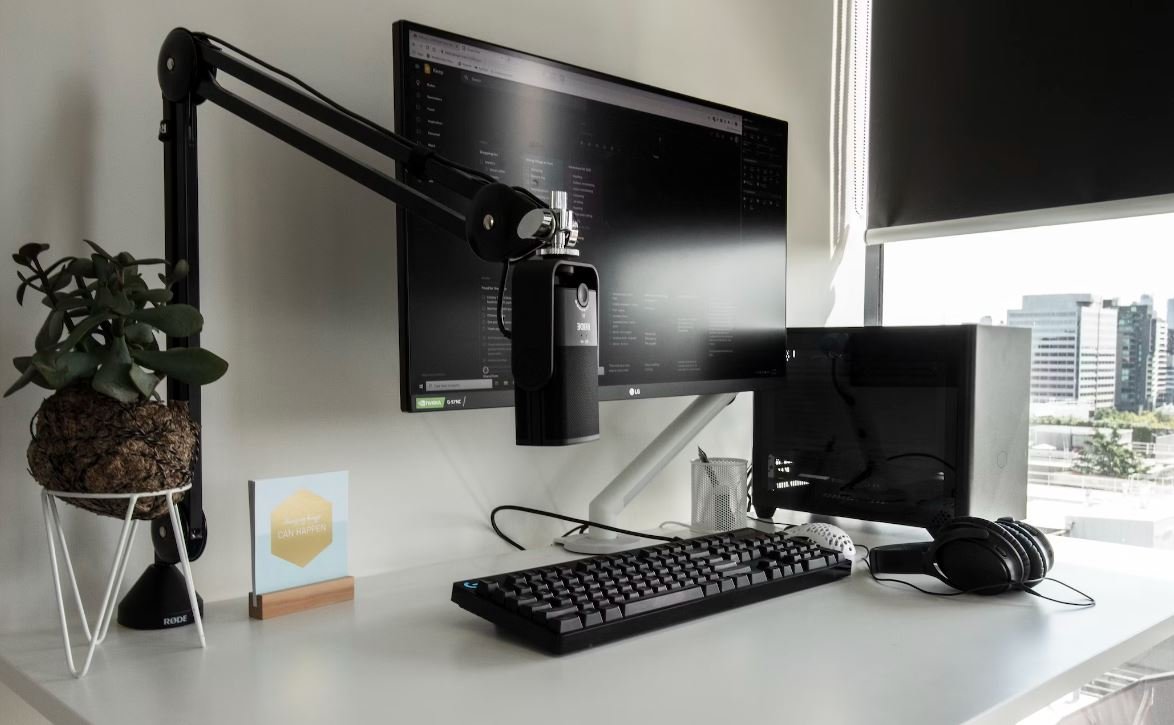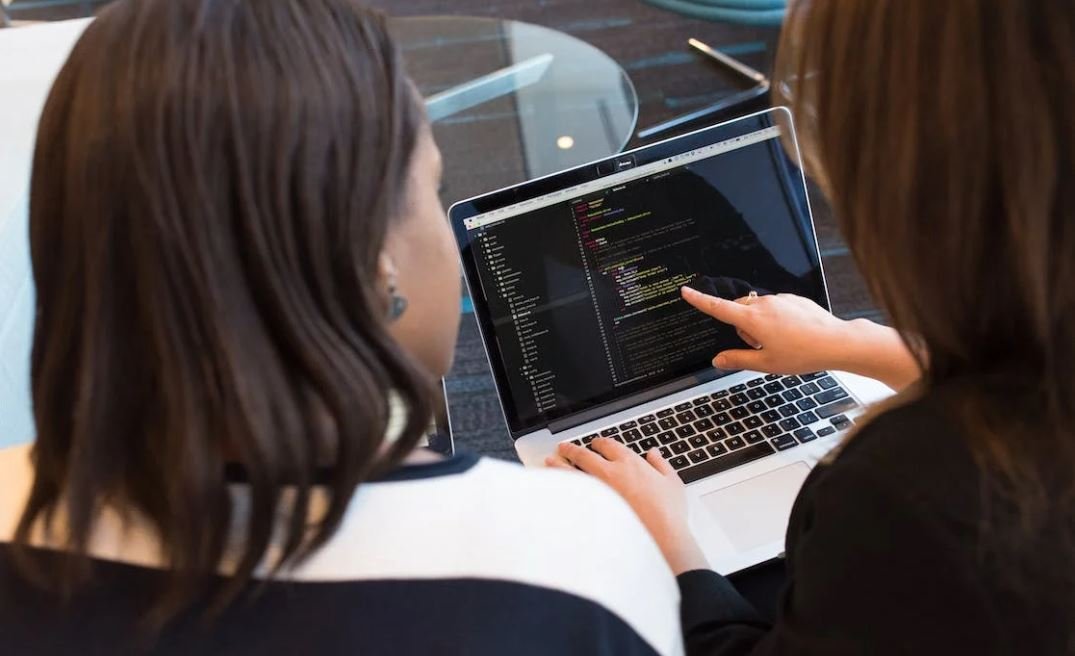How Are AI Deepfakes Made
Deepfakes, a portmanteau of “deep learning” and “fake,” refer to convincing fake media created using artificial intelligence (AI) techniques. These media can include manipulated images, videos, or even audio recordings. Deepfakes have gained significant attention and concern due to their potential for misuse and spreading misinformation.
Key Takeaways:
- AI deepfakes are produced using a combination of machine learning algorithms and neural networks.
- Deepfake technology can generate hyper-realistic videos that are difficult to distinguish from genuine recordings.
- Deepfakes can be used for various purposes, including entertainment, political manipulation, and fraud.
- Technology and research are ongoing to develop detection methods to combat the prevalence of deepfakes.
AI deepfakes are created through a multistep process that involves training a neural network on a large dataset of real and manipulated media. The neural network learns how to analyze and mimic the patterns present in the training data, allowing it to generate new content that closely resembles the original.
*Deepfake algorithms can generate an entirely convincing face swap by mapping the facial features of one person onto the body of another.*
The AI Deepfake Creation Process
The process of creating a deepfake typically involves the following steps:
- Data Collection: The first step is to gather a significant amount of data, including images or videos of the target person and the person whose face will be used for the manipulation.
- Preprocessing: The collected data is then processed to extract the relevant features and align them properly for the subsequent stages.
- Model Training: Neural networks are trained on the preprocessed data to learn the patterns and characteristics required to generate convincing deepfakes. This typically involves using a technique called Generative Adversarial Networks (GANs).
- Fine-tuning: Additional refinements are made to the trained model to improve the quality and accuracy of the generated fake content.
- Content Generation: Once the model is trained, it can be used to generate deepfake images or videos by mapping the facial features of the target person onto the selected source person. The generated content is then blended seamlessly to create a convincing final result.
*The deepfake creation process requires a significant amount of computing power and data to achieve high-quality results.*
Challenges and Ethical Considerations
The rise of AI deepfakes poses several challenges and ethical considerations:
- Spread of Disinformation: Deepfakes can be used to spread false information, potentially leading to misinformation campaigns and public manipulation.
- Privacy Concerns: The technology can be misused for activities such as non-consensual pornographic content or targeted harassment.
- Trust and Authenticity: The prevalence of deepfakes creates a climate of skepticism, undermining trust in media and making it more difficult to discern truth from falsehoods.
- Legality and Consent: Deepfakes raise legal and consent-related issues, as using someone’s likeness without permission can violate privacy rights and intellectual property laws.
Existing Detection Methods and Future Solutions
The battle against AI deepfakes also includes the development of detection methods to identify manipulated content:
| Detection Method | Advantages | Limitations |
|---|---|---|
| Forensic Analysis | – Can identify inconsistencies and artifacts in manipulated content. – Supports investigation and evidence gathering. |
– Often requires manual inspection, making it time-consuming. – May not be effective against sophisticated deepfakes. |
| AI-Based Algorithms | – Can analyze patterns and anomalies in deepfake content at scale. – Can adapt to new and evolving deepfake techniques. |
– May generate false positives or struggle with high-quality deepfakes. |
*Researchers are continually refining and improving detection methods to keep pace with the advancements in AI deepfakes.*
The Future of AI Deepfakes
AI deepfakes have the potential to become more sophisticated and believable, making it increasingly challenging to distinguish between real and fake content. As technology advances, it is crucial to focus on developing robust detection mechanisms, raising awareness about the existence and risks of deepfakes, and fostering responsible use of AI.
*Constant vigilance and a multidisciplinary approach involving technology, law enforcement, and media literacy will be essential in combating the evolving threats posed by AI deepfakes.*

Common Misconceptions
1. AI Deepfakes are Easy to Detect
One common misconception surrounding AI deepfakes is that they are easy to detect. However, this is not entirely true. While there are some telltale signs of a deepfake, such as glitches or inconsistencies in facial movements, recent advances in deepfake technology have made it much more difficult to distinguish real videos from manipulated ones.
- Advancements in AI algorithms have led to more realistic deepfakes.
- Deepfake creators can use high-quality source videos to produce more convincing deepfakes.
- There are tools and techniques available to help deepfake creators conceal the imperfections in their content.
2. Deepfakes Can Only Be Created by Experts
Another misconception is that deepfakes can only be created by experts in the field of artificial intelligence and machine learning. While expertise certainly helps, the proliferation of user-friendly deepfake software has made it possible for anyone with basic technical knowledge to create convincing deepfake videos.
- User-friendly deepfake apps and software have made it accessible to a wider audience.
- Online tutorials and guides are available to assist beginners in creating deepfake content.
- Deepfake creation tools often provide pre-trained models that simplify the process for novices.
3. Deepfakes are Harmless Pranks
Some individuals perceive deepfakes as harmless pranks or entertainment. However, deepfakes can have serious consequences, ranging from reputational damage to misinformation and even fraud. The ability to manipulate videos and make people say or do things they never did in reality can have profound impacts on individuals and society as a whole.
- Deepfakes can be used to fake endorsements or speeches, misleading the public.
- Reputation and careers can be tarnished due to false deepfake videos.
- Manipulated videos can spread misinformation, leading to confusion and distrust.
4. AI Deepfakes are Limited to Videos
Many people believe that AI deepfakes are limited to manipulating videos. However, deepfake technology can also be applied to audio, images, and even text. This means that the potential for misuse and manipulation extends beyond just videos.
- Deepfake audio can be used to impersonate someone’s voice or create fake audio recordings.
- Deepfake images can be created to manipulate appearances or create fake evidence.
- Text-based deepfakes can generate fake news articles or social media posts.
5. Deepfakes are Only a Problem for Celebrities
While deepfakes of celebrities have garnered significant attention, it is a misconception to think that they are the only ones at risk. Deepfakes can affect individuals from all walks of life, as well as organizations and public figures. The potential for harm and deception exists for anyone who becomes a target of deepfake manipulation.
- Deepfakes can be used to target individuals in cases of cyberbullying or revenge porn.
- Public figures and politicians can be targeted to manipulate public opinion or create disinformation.
- Organizations may face reputational damage or financial loss due to deepfake manipulation.

How Are AI Deepfakes Made
Artificial intelligence (AI) has given rise to the creation of deepfakes, which are manipulated videos or images that appear remarkably realistic. Deepfakes have raised concerns about misinformation and privacy. Here, we explore ten aspects of AI deepfakes and shed light on their creation process.
The Rising Popularity of Deepfakes
Deepfakes have gained immense popularity in recent years. They can be found in various forms, including fake news, celebrity impersonations, and adult content. The table below shows the global search interest in deepfakes across different countries:
| Rank | Country | Search Interest |
|——|————–|——————|
| 1 | United States| High |
| 2 | United Kingdom| Medium |
| 3 | Canada | Medium |
| 4 | Australia | High |
| 5 | Germany | Low |
| 6 | India | High |
| 7 | France | Medium |
| 8 | Japan | Low |
| 9 | Brazil | Medium |
| 10 | Mexico | Medium |
How Deepfakes Are Generated
Deepfakes are created by leveraging artificial intelligence algorithms to swap faces or modify existing media. The table below showcases the steps involved in generating deepfakes:
| Step | Description |
|——|————————————————————|
| 1 | Collect training data (face images of the target person). |
| 2 | Use AI algorithms to extract facial features. |
| 3 | Train a deep learning model to learn facial characteristics.|
| 4 | Apply the trained model to swap faces or modify media. |
| 5 | Refine the deepfake result to enhance realism. |
Data Required for Creating Deepfakes
To generate convincing deepfakes, a substantial amount of training data is needed. The following table shows the approximate dataset sizes used for specific deepfake applications:
| Application | Approximate Dataset Size |
|—————–|—————————-|
| Face Swapping | 5,000 – 10,000 images |
| Voice Cloning | 30-50 hours of audio |
| Full Body | 50+ hours of video |
| Text to Speech | 10,000+ sentences |
Detection Techniques for Deepfakes
As the threat of deepfakes grows, researchers are constantly developing detection methods. The table below highlights some common techniques used for identifying deepfakes:
| Technique | Description |
|———————————–|—————————————————–|
| Facial Examination | Analyzing inconsistencies in facial expressions. |
| Metadata Analysis | Examining hidden information in image or video files.|
| Digital Forensics | Using software to analyze the authenticity of media. |
| Audio Analysis | Detecting audio anomalies or distortions. |
| Eye Blink Analysis | Identifying unnatural eye movements. |
| Motion Flow Analysis | Analyzing irregularities in body movements. |
Deepfake Influencers on Social Media
Deepfake creators have developed a significant online presence, with some gaining massive followings. The table below showcases popular deepfake influencers and their respective social media platforms:
| Influencer | Social Media Platform |
|—————–|———————–|
| FakeAppMaster | YouTube |
| Ctrl Shift Face | Reddit |
| Deep Fake Mesiah| Twitter |
| Derpfakes | Instagram |
| The Fakening | Facebook |
Applications of Deepfakes
Deepfakes can be used for various purposes, both positive and negative. The table below explores the diverse applications of deepfake technology:
| Application | Description |
|——————————|—————————————————————————————————————————————-|
| Entertainment | Creating realistic scenes in movies, TV shows, or video games using famous personalities or historical figures. |
| Training and Education | Simulating realistic scenarios for medical training, crisis management training, or educational simulations. |
| Visual Effects | Enhancing visual effects in films by seamlessly replacing actors or stunt performers with computer-generated versions. |
| Political Satire/Commentary | Creating satirical content or political commentary by placing politicians or public figures in humorous or critical situations. |
| Visualizing Historical Events| Reconstructing historical events with accurate renditions of influential figures, providing a unique educational experience. |
| Augmented Reality | Overlaying virtual content onto real-world imagery, allowing users to interact with virtual objects and characters blended into reality. |
Implications and Ethics of Deepfakes
The creation and spread of deepfakes present several ethical concerns and potential implications. The table below highlights key areas affected by the emergence of deepfake technology:
| Area | Implications |
|—————————–|————————————————————————————————————————————–|
| Misinformation | Deepfakes can be used to spread false narratives, damaging reputations and shaping public opinion. |
| Privacy Invasion | Individuals can have their identities exploited, as deepfakes can be used to create explicit or compromising content without consent. |
| Legal Consequences | Deepfakes may lead to legal issues, including defamation and intellectual property infringement. |
| Political Manipulation | Deepfakes can be utilized to manipulate elections, undermine trust in public figures, or incite social unrest. |
| Trust and Media Integrity | The authenticity of visual media is jeopardized, eroding public trust in journalistic integrity and creating skepticism among viewers.|
The Future of Deepfakes
As deepfake technology continues to advance, it is crucial to address the challenges it poses. Stricter regulations, improved detection methods, and increased public awareness are necessary for mitigating the potential risks. By doing so, we can enjoy the benefits of this technology while safeguarding against its negative aspects.
FAQ – How Are AI Deepfakes Made
Q: What are AI deepfakes?
A: AI deepfakes are synthetic media created using artificial intelligence techniques, particularly deep learning algorithms, to manipulate or alter existing videos, images, or audios with the intent of deceiving or misleading viewers.
Q: How do AI deepfakes work?
A: AI deepfakes typically involve training a deep learning model, such as a convolutional neural network (CNN) or generative adversarial network (GAN), on a large dataset of real images and videos. The model learns to recognize patterns and features from the dataset and can then generate realistic-looking fake content by applying those learned patterns to new input.
Q: What are the steps involved in creating AI deepfakes?
A: The creation of AI deepfakes generally involves the following steps:
1. Gathering a large dataset of source images or videos.
2. Preprocessing and formatting the data.
3. Training a deep learning model on the dataset.
4. Fine-tuning the model for the desired task, such as face swapping or voice synthesis.
5. Applying the model to new inputs to generate synthetic media.
Q: What are some common techniques used for creating AI deepfakes?
A: Some popular techniques utilized in creating AI deepfakes include autoencoders, variational autoencoders (VAEs), conditional GANs, cycleGANs, and neural style transfer. These techniques help in capturing and replicating the distinctive features of the original content while introducing modifications or replacements as desired.
Q: Can AI deepfakes be detected or identified?
A: Yes, efforts are being made to develop tools and algorithms that can detect AI deepfakes. Researchers are exploring various methods like analyzing inconsistencies in facial expressions, audio anomalies, unnatural eye movements, and other artifacts that may indicate the presence of a deepfake. However, as deepfake technology advances, so does the complexity of detection.
Q: What are the potential uses of AI deepfakes?
A: While deepfakes can be used for nefarious purposes, such as spreading misinformation or creating fake news, they also have potential positive applications. These include entertainment, filmmaking, dubbing foreign films, improving video conferencing experiences, and generating realistic virtual avatars for gaming and virtual reality.
Q: Are AI deepfakes legal?
A: The legality of AI deepfakes varies depending on the jurisdiction and the intended use. In many countries, deepfakes that are created and distributed with the intent to deceive, harm, defame, or commit fraud are illegal. However, laws regarding deepfakes are still evolving, and their regulation can be complex and challenging.
Q: How can individuals protect themselves from AI deepfakes?
A: There are no foolproof methods to protect against AI deepfakes, but individuals can take certain precautions. These include being cautious of the content they consume, verifying information from multiple trusted sources, fact-checking suspicious videos or images, and raising awareness about deepfake technology within their communities.
Q: How are AI deepfakes impacting society?
A: The rise of AI deepfakes poses significant challenges for society as it can contribute to the spread of misinformation, erode trust in media, and raise ethical concerns related to privacy, consent, and the potential for abuse. Efforts are underway to address the societal impact through increased awareness, legislation, and development of detection and mitigation techniques.
Q: What is the future of AI deepfakes?
A: The future of AI deepfakes remains uncertain. As detection techniques advance, creators of deepfakes may find new ways to make them more convincing. It is crucial for researchers, policymakers, and technology developers to keep pace with the evolving landscape of AI deepfakes to effectively combat their negative consequences.




